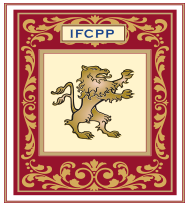Reposted from Northern States Conservation Center
Volunteer Management- Is your museum really ready?
Volunteers are an important part of many museums. Volunteers do work for us; they educate visitors; they answer questions; they bring in money. But having a successful volunteer program means laying some strong foundations.
Start with the main foundation of the museum itself - its mission. Volunteers' main reason for existing should be to support the organization's mission, no matter what their job. Every staff and volunteer should be able to state exactly how what they do directly supports the mission. It is not enough to say they do some job to support the mission, but they must know how they support the mission. For example, someone working at a gift shop supports the mission by making additional information supporting the resource available to visitors; a person leading tours unlocks the resource to visitors; and a person stuffing envelopes sends out opportunities for interested individuals to interact with the resource.
Once everyone embraces that volunteers support the mission, it is time for staff to acknowledge the cost of volunteers. Contrary to the hope of many, volunteers are not free. They require resources of which time and money are two. What resources is your organization willing to commit to managing volunteers? Begin with which staff person will be the overall manager. Depending on the number of volunteers needed, a full-time volunteer manager can be hired, diverting some funds to management or the task of volunteer managing can be given to an existing staff person and adding on to job responsibilities, diverting time to volunteer management. Staff also need to understand the impact volunteers might have on their own work. If volunteers congregate near other staff work areas, noise levels increase. Some staff easily can tune this out and others will be totally distracted.
Volunteers have social needs which can affect staff. While many reasons exist for individuals to volunteer, two are high at the list: the need for a social network and the desire to learn from the experts. When volunteers need social connection, they can get that from other volunteers and from staff. As volunteers come in at varying times throughout the day and week, if every one of them stopped by staff desks and talked only 5 minutes each time, that adds up to several hours of the staff person's day. When the desire to learn from experts is what draws an individual to volunteer, interruptions to the staff day can be thirty minutes or more at a time. Managing these interruptions takes planning. Staff might post designated "open office" hours where they plan their workday to welcome volunteers stopping by or a volunteer staging area might be provided away from the main area of paid staff.
And space is another resource volunteers need. They need an area to hang coats, leave purses or backpacks, record their hours, and receive communications. Maybe this is a nook with just a desk and bulletin board or maybe it is an entire room designed for volunteer use. Space is often at a premium in museums, so designating some for volunteers is sometimes challenging.
Yet one more foundational block to consider is the main role volunteers have within the organization - fundraising, work force, idea bank. Each purpose requires a separate set of strategies for recruiting, training, communicating, and rewarding.
Finally, decide who is in charge, who has the authority to make decisions, and who has final responsibility. The overall structure greatly influences the relationship of the volunteer program with the organization. At the most basic level, volunteer programs are either staff guided, or volunteer guided. This is determined by the answer to two questions: first, how much input do the volunteers need in order to provide the resources as defined in the purpose of the volunteer program, to accomplish the defined tasks, and to feel valued; second, how much time is staff willing to put into discussions and compromises? In a staff-dominated structure, a staff person makes decisions, initiates communication, matches jobs with volunteers, solves problems, recruits volunteers, etc. It is time-consuming, but one person always knows everything going on and can keep the pieces connected. Change is easier to manage, and communication is more streamlined. Processes are simplified and fewer personalities need to be considered. Volunteers primarily do an assigned job. Volunteers might not feel connected or that their voices are heard - this can lead to high turnover.
In a volunteer-dominated structure, volunteers manage themselves in most situations. They might have a leadership board and several committees to share the work and make sure everything is done. Volunteers have a strong sense of ownership and commitment. However, they can lose sight of their role to support the organizational mission and finding leadership each year can be challenging.
No matter what structure is in place, it should be clear and effective. Drawing up an organizational flowchart can be helpful. Does it make sense? Is leadership clear - who is in top decision-making positions?
Once all the above foundational aspects are determined, orientation for new paid staff should include time on the role of volunteers to the museum and the expected culture of staff/volunteer relationships. If all the foundational elements are firmly in place, you are now ready to start recruiting volunteers.
The Volunteer Handbook-
Volunteers should be considered unpaid staff and, like a staff handbook, a strong volunteer organization should have a volunteer handbook. This course goes beyond understanding various aspects of a volunteer program to putting the volunteer program to paper. Create an outline and some draft text for a handbook providing consistency within the volunteers as well as legal support if ever needed.
__________________________________
Thinking of starting or updating a Volunteer Program? Do you need to create a Volunteer Handbook? Learn all about how to create an effective volunteer program by joining Karin Hostetter for MS259 The Volunteer Handbook starting April 7, 2025.
See Original Post
